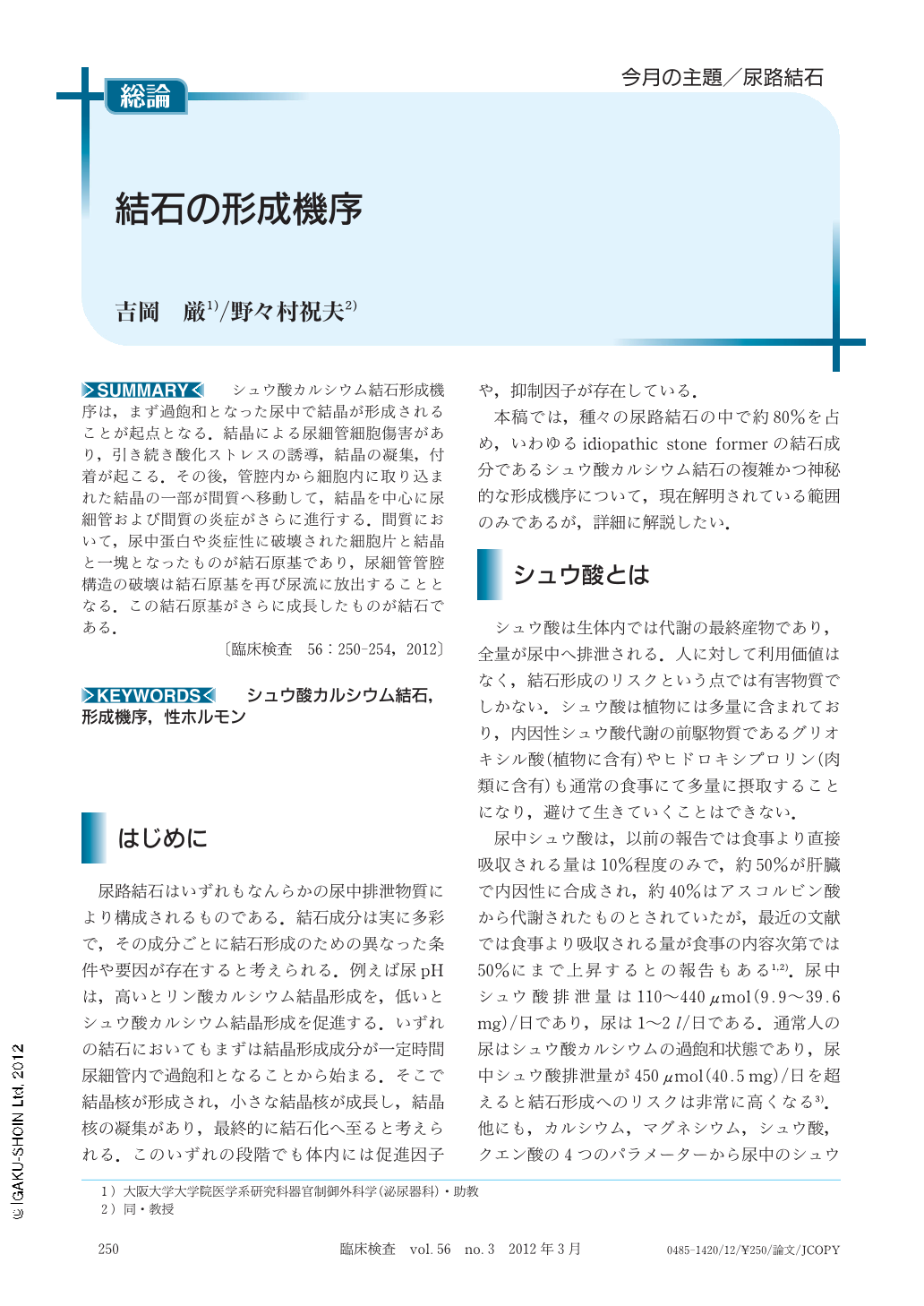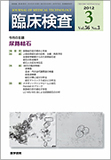Japanese
English
- 有料閲覧
- Abstract 文献概要
- 1ページ目 Look Inside
- 参考文献 Reference
シュウ酸カルシウム結石形成機序は,まず過飽和となった尿中で結晶が形成されることが起点となる.結晶による尿細管細胞傷害があり,引き続き酸化ストレスの誘導,結晶の凝集,付着が起こる.その後,管腔内から細胞内に取り込まれた結晶の一部が間質へ移動して,結晶を中心に尿細管および間質の炎症がさらに進行する.間質において,尿中蛋白や炎症性に破壊された細胞片と結晶と一塊となったものが結石原基であり,尿細管管腔構造の破壊は結石原基を再び尿流に放出することとなる.この結石原基がさらに成長したものが結石である.
The incidence of renal stones has increased progressively. Despite a vast amount of research, the pathogenesis of oxalate calcium stone is controversial. The process involves multiphases. Recent research on the pathogenesis has reported that urinary supersaturation and crystallization occurs in the renal tubule at first, and renal epithelial cell injury initiates the stone formation. The injury is caused by calcium oxalate toxicity, and continuous reactive oxygen species generation could lead to additional cell injury. Angiotensin Ⅱ emphasizes this process. The epithelial cells stimulated by calcium oxalate or oxidative stress, promote crystal-cell interaction. This phase is the second important factor. After endocytosis, some crystals eventually move into interstitial space, causing inflammation and attracting inflammatory cells. Finally, stone nidus grows in the interstitial space.

Copyright © 2012, Igaku-Shoin Ltd. All rights reserved.


